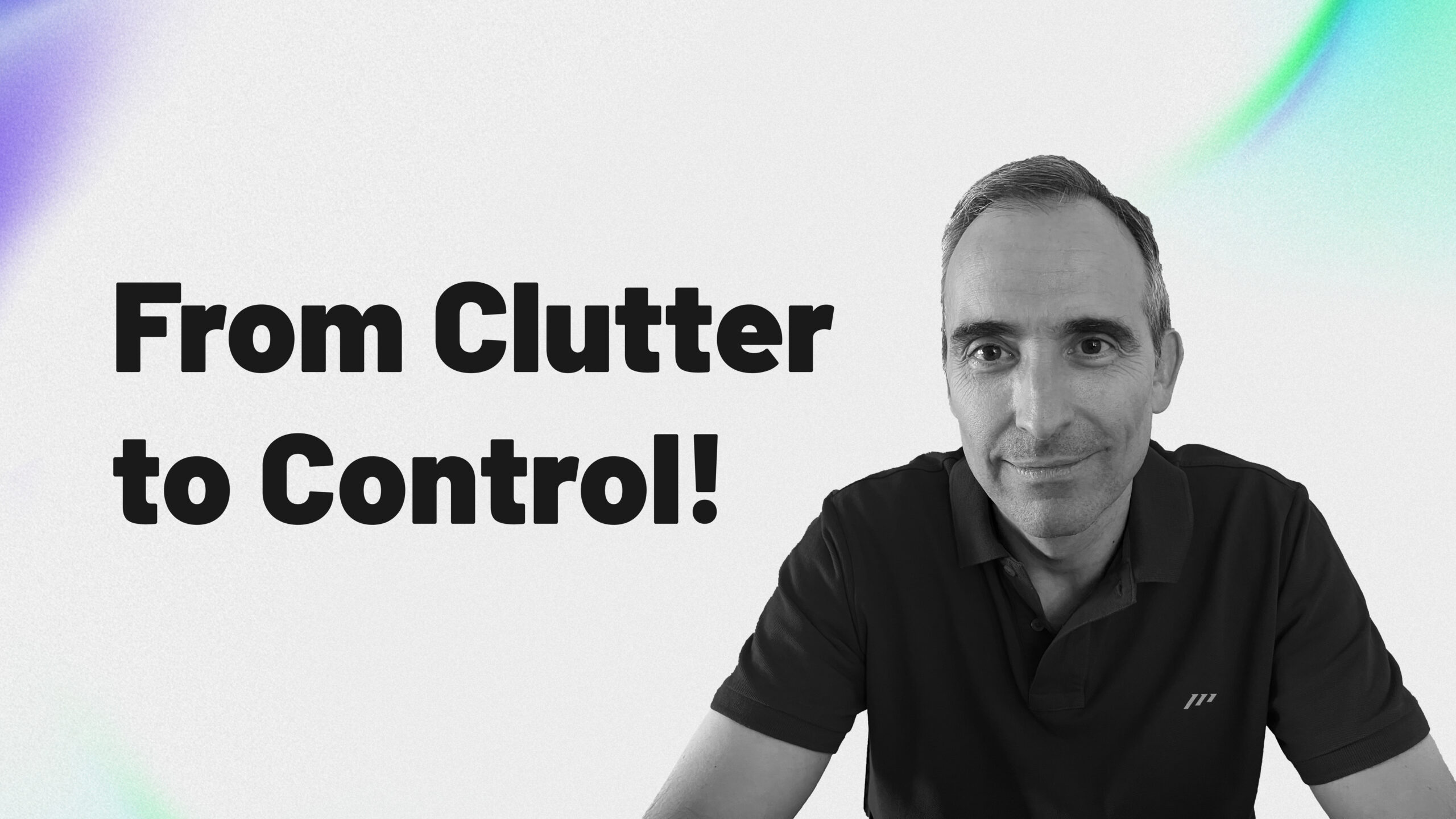After talking with busy professionals about productivity for decades, I’ve concluded that many of them don’t fully grasp the concept of an inbox.
As a result, they miss out on the incredible benefits it can bring to their productivity systems.
Personally, using my inbox correctly has boosted my productivity and outcomes and reduced my anxiety and stress levels by keeping everything under control.
If you take the time to truly understand what an inbox is and learn how to use it effectively, I can guarantee that you’ll see the same positive results.
Managing information and tasks will become a breeze, and you’ll have an intuitive system to improve the way you work.
In this article, I will delve into the concept of inboxes and provide clear use cases to help you have that “aha” moment you need to start implementing it immediately, taking your productivity to the next level.
Let’s get started!
Why Do People Criticize Inboxes?
As I mentioned earlier, I’ve come to the same conclusion: people often criticize inboxes because they don’t fully understand them, leading to improper usage.
Many individuals make the mistake of dumping everything into their inboxes, resulting in clutter and chaos in their productivity systems.
They create a “monster task” called “inbox processing,” which only exacerbates their situation.
Instead of helping them accomplish tasks, this approach causes them to spend more time organizing than actually doing.
And let’s not forget, the only way to achieve your goals is by taking action (doing).
What Is Not an Inbox?
To clarify an inbox’s true meaning, it’s sometimes helpful to explain what it is not.
An inbox is not:
- Simply delaying an action to be done at a later time. While this may be a function of an inbox, it’s essential to understand the subtleties of this delay and how to manage it effectively.
- A tool for capturing ideas, tasks, or thoughts to avoid workflow interruptions. There’s more to it than that.
The Previous Concept You need to Understand Before Using Inboxes: SSOT
A Single Source Of Truth (SSOT) is the ultimate objective of an ideal productivity system. It entails storing everything in its rightful place to recall later using your intuition effortlessly.
In essence, this means that whenever something comes to mind, you should immediately store it in its designated SSOT.
Once you achieve this, you can confidently say you have an outstanding productivity system.
When Should You Use an Inbox?
There are only two situations where you should use an inbox:
- When the SSOT is unclear. In this case, an inbox gives you time to think about where the item should be stored.
- When you are not in the optimal situation to store the item. For example, if you are out of the office using a mobile device, in a meeting, or a stressful or chaotic situation.
To simplify it further: you should use an inbox whenever you cannot quickly and easily store an item in its appropriate SSOT.
Using inboxes this way can provide a sense of serenity and peace of mind.
In stressful scenarios, leaving an item in the inbox lets you release it from your mind, knowing you’ve taken the necessary steps to ensure it’s handled properly.
Your Email Inbox Is Not an Inbox
I personally do not consider email inboxes to be true inboxes.
This is because managing your email inbox is often a task in and of itself.
The term “inbox” became popular because email was the first digital inbox that came into our lives.
However, depending on your job position, cleaning up your email inbox can become a crucial task that takes much longer than just 5 minutes.
Instead, it’s important to think of inboxes as integral parts of your productivity system, where you are the only one responsible for placing items into them.
This means you have complete control over your inboxes.
So, what exactly is an inbox?
What Is an Inbox?
We can now provide a precise definition of what an inbox is.
An inbox is your SSOT when you cannot store an item in the correct SSOT, whether that’s because it’s unclear or because you’re not in the right situation.
Using an inbox ensures you always adhere to the golden rule of any productivity system: storing everything in its appropriate SSOT.
However, it’s important to note that inboxes are only temporary SSOTs. Items should not remain in your inbox for long periods of time.
The most crucial rule regarding inboxes is that you should clean them up quickly. Ideally, it should only take five minutes to empty your inbox.
Now, let’s discuss how you should process your inbox items.
How You Should Process an Inbox
Processing an inbox is considered a to-do in ICOR® terms, and, as I said before, it shouldn’t take more than 5 minutes.
How do you accomplish this time frame?
- You always try to minimize the number of items in the inbox by storing things in their correct SSOT and not the inbox.
- You must process the inbox daily as part of your routine to keep the number of items you process low.
The process of inbox processing is simply going through each item and placing it in the appropriate SSOT without taking any additional action.
You remain focused during this task, knowing precisely what needs to be done and avoiding any distractions that may arise.
Remember, executing the item is not part of the inbox processing but instead, organizing it for later action.
An Example to Consolidate the Concept of Inbox
Let me share some of my workflows as an example of how I manage my inbox.
When I’m on my mobile device, and an idea comes to mind, I use Drafts because it’s the fastest app for jotting down text I’ve ever tried.
I’ve created an action on Drafts that allows me to send the idea to my Mem inbox with just one click.
Later, I process the items in my inbox during my daily routines.
Here’s what I do with each item:
- If it’s an idea for an article, I create it on Tana, my outlining tool and the starting point of my content creation process.
- If it’s something I need to discuss with the Team Paperless Movement®, I create it in the Agenda list we have on ClickUp.
- If it’s an idea I want to keep for future use, I mark it as processed in Mem (it disappears from the inbox), which is my core personal knowledge management (PKM) tool inside my ICOR® Framework.
To avoid cluttering my inbox, I try to create tasks directly on my other tools. For example:
- If a task comes to mind, I create it directly on my micro-management tool: Sunsama.
- If it’s a simple task I just need to be reminded of, I create it directly on my reminder tool: Due.
- If I’m on my desktop and a task related to my team comes to mind, I create it directly on ClickUp.
I hope this example gives you a better understanding of how I process my inbox and use different tools to manage my tasks and ideas.
Takeaways
An inbox is not meant to delay action but rather to give you the necessary pause to decide what action is needed calmly.
Many times, you’ll find that no action is needed at all.
This is why an inbox can help you avoid cluttering your productivity system with items you don’t really need. You’d be surprised by how things that seem life-changing at the moment of capture become meaningless a few hours later.
In addition to avoiding clutter, inboxes help you organize your productivity system by ensuring that items are always created in the right SSOT, waiting to be retrieved when needed.
While some may argue against using inboxes, using your intuition and common sense when interacting with your productivity system is essential.
If inboxes don’t work for you, that’s okay. Your productivity system should always be tailored to your individual needs and preferences.
As someone who has been using inboxes for decades, I’ve found that the more I use them, the faster my workflows run.
Ultimately, it’s up to you to decide whether or not to incorporate inboxes into your productivity system.




